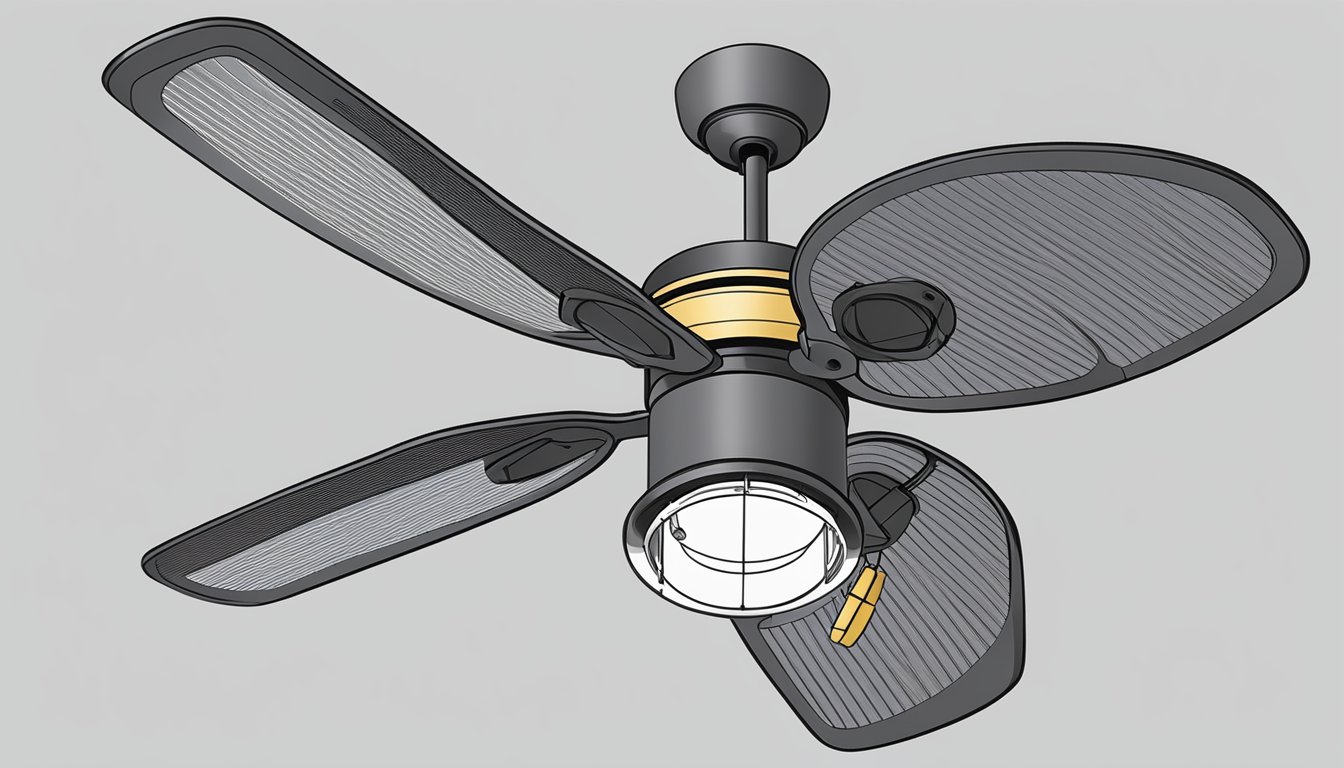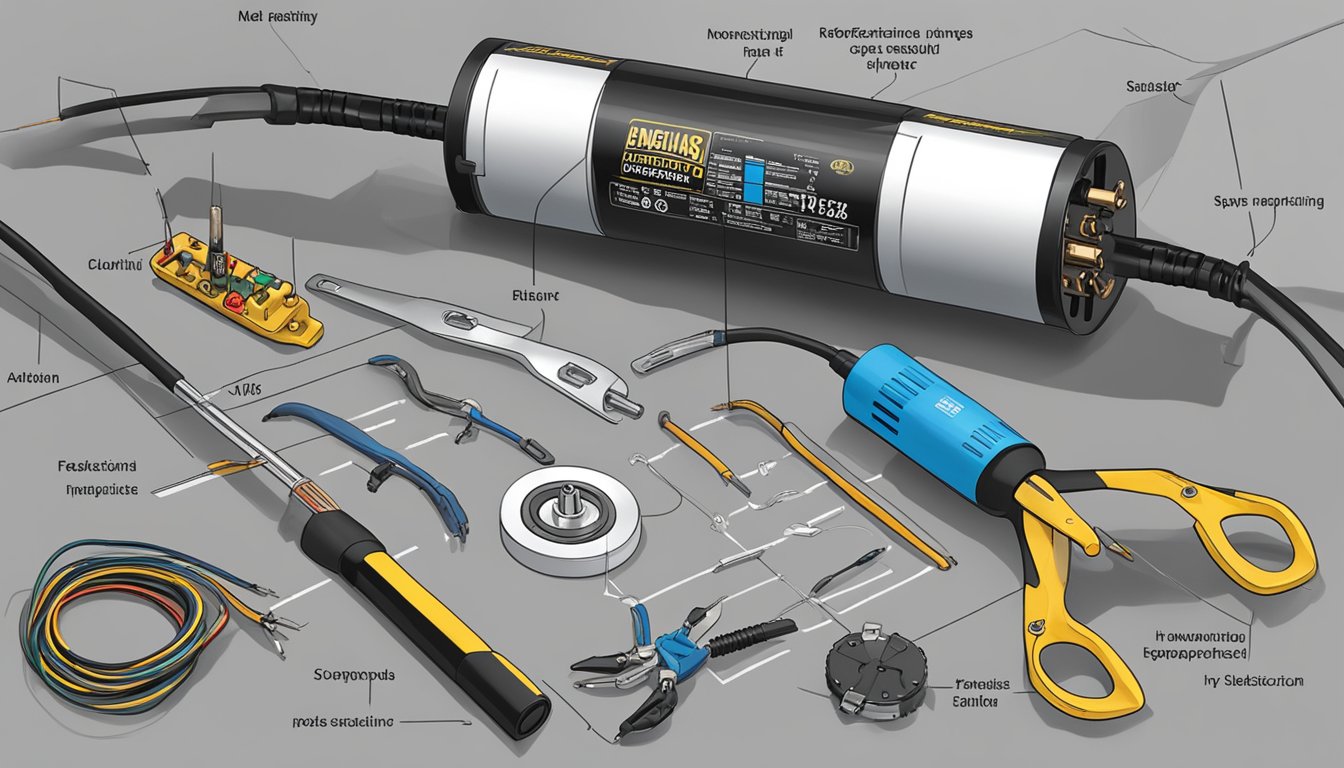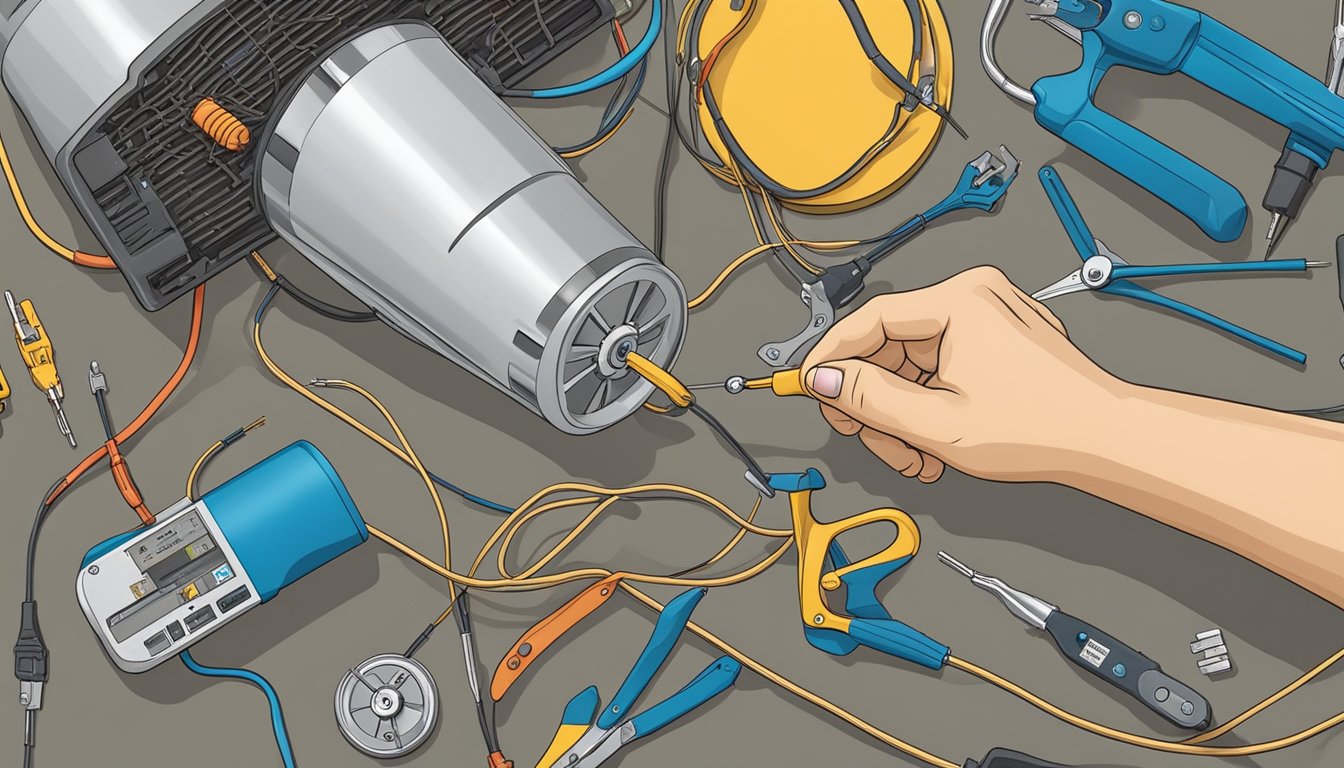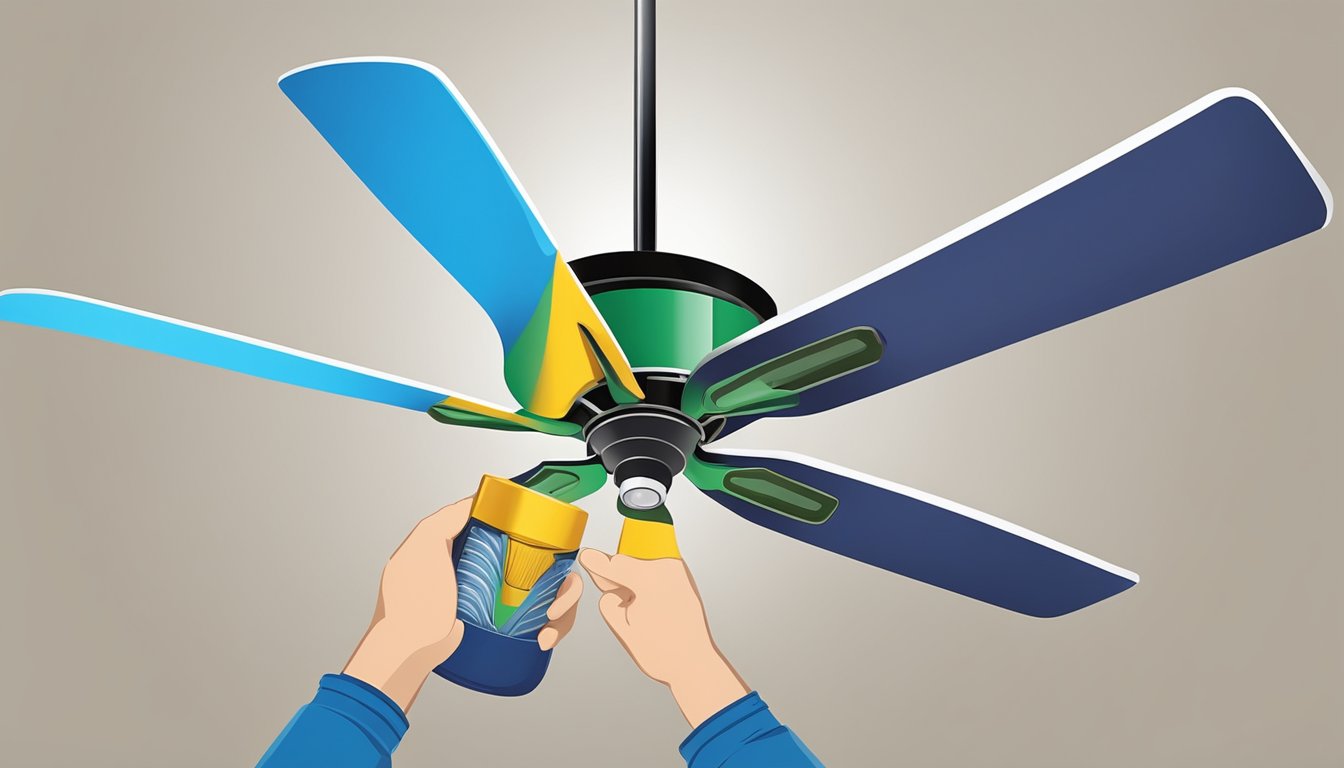If you're looking to keep your home cool and comfortable during the hot summer months, a ceiling fan can be a great investment. However, like any other appliance, ceiling fans can experience issues over time. One common issue that homeowners encounter is a malfunctioning ceiling fan capacitor.

Ceiling fan capacitors are small, cylindrical devices that store and release electrical energy. They play an important role in the function of your ceiling fan by providing the necessary electrical charge to start the motor and keep it running. If your ceiling fan is having trouble starting up, running at the proper speed, or making strange noises, it may be due to a faulty capacitor.
Understanding Ceiling Fan Capacitors Ceiling fan capacitors come in various shapes, sizes, and ratings. They are typically made of metal, plastic, or paper, and can be either polarized or non-polarized. Capacitors are rated in microfarads (μF) and voltage (V), and it's important to choose the correct capacitor for your specific ceiling fan model. If you're not sure which capacitor to use, it's best to consult with a professional electrician or refer to your ceiling fan's user manual.
Practical Insights and Maintenance Regular maintenance of your ceiling fan can help prolong the lifespan of your capacitor and prevent issues from arising. Make sure to clean your ceiling fan blades regularly to prevent dust buildup, which can cause strain on the motor and capacitor. Additionally, check for any loose wiring or connections, and tighten them if necessary. If you suspect that your ceiling fan capacitor is faulty, it's important to replace it as soon as possible to avoid further damage to your ceiling fan.
Key Takeaways
- Ceiling fan capacitors are small devices that store and release electrical energy to start and keep the motor running.
- Capacitors come in various shapes, sizes, and ratings, and it's important to choose the correct capacitor for your specific ceiling fan model.
- Regular maintenance of your ceiling fan can help prolong the lifespan of your capacitor and prevent issues from arising.
Understanding Ceiling Fan Capacitors

Ceiling fans are an essential appliance in many households around the world. They help to cool the room, regulate the temperature, and improve air circulation. One of the most important components of a ceiling fan is the capacitor. In this section, we'll take a closer look at the fundamentals of capacitors, their role in ceiling fans, the different types and functions, and how to diagnose and troubleshoot any issues.
Fundamentals of Capacitors
A capacitor is an electronic component that stores energy in an electric field. It is made up of two conductive plates separated by a dielectric material. The capacitance of a capacitor is measured in microfarads (μF) or farads (F). Capacitors are used in a wide range of electronic devices, including ceiling fans, to store and release electrical energy.
Role in Ceiling Fans
The capacitor plays a crucial role in the operation of a ceiling fan. It is responsible for starting and running the motor. The motor in a ceiling fan has multiple windings, including the main winding, auxiliary winding, running winding, and starting winding. The capacitor provides a phase shift between the windings, which creates a rotating magnetic field that produces torque and starts the motor. Once the motor is running, the capacitor provides additional torque to keep it running.
Types and Functions
There are two main types of fan capacitors: start capacitors and run capacitors. Start capacitors are used to provide the initial torque needed to start the motor. They are designed to be used for a short period of time and are disconnected from the circuit once the motor is running. Run capacitors, on the other hand, are used to provide additional torque to keep the motor running. They are designed to be used for long periods of time and remain connected to the circuit while the motor is running.
Symptoms and Diagnostics
If your ceiling fan is not running or is running slowly, it could be due to a bad capacitor. The symptoms of a bad capacitor include the fan not starting, running in the wrong direction, or running slower than usual. You can diagnose a bad capacitor using a multimeter to test the capacitance and resistance. If you suspect that your capacitor is bad, it's best to call an electrician to replace it.
Regional Variations
Ceiling fan capacitors can vary depending on where you live. In the US, ceiling fans typically use single-phase induction motors with split-phase windings. In the EU, ceiling fans typically use single-phase induction motors with shaded-pole windings. The power supply in the US is 110V, while in the EU it is 230V. It's important to select the right capacitor for your ceiling fan based on your region.
Selecting the Right Capacitor
When selecting a capacitor for your ceiling fan, you need to consider the capacitance, voltage rating, and manufacturer. The capacitance should match the original capacitor in your fan, and the voltage rating should be equal to or higher than the original. It's best to use a capacitor from the same manufacturer as your ceiling fan to ensure compatibility.
Installation and Safety
Installing a ceiling fan capacitor can be dangerous if you don't take the proper safety precautions. Make sure to turn off the power supply before installing the capacitor and discharge any stored energy. It's best to call an electrician to install the capacitor to ensure that it's done safely and correctly.
Maximising Efficiency and Lifespan
To maximise the efficiency and lifespan of your ceiling fan capacitor, it's important to perform regular maintenance. This includes cleaning the fan blades and motor, lubricating the bearings, and checking the capacitor for any signs of wear or damage. It's also important to use a regulator to control the speed of your fan and prevent it from running too fast. By taking these steps, you can ensure that your ceiling fan capacitor lasts for many years to come.
Now that you understand the fundamentals of ceiling fan capacitors, their role in ceiling fans, the different types and functions, and how to diagnose and troubleshoot any issues, you can make an informed decision when selecting and installing a capacitor for your ceiling fan. Visit Megafurniture.sg, a leading Singapore ecommerce furniture store, to find the perfect ceiling fan for your home.
Practical Insights and Maintenance

Maintaining your ceiling fan capacitor is essential to ensure its longevity and smooth operation. Here are some practical insights and maintenance tips to help you keep your fan capacitor in top shape.
Routine Care Tips
Routine care is essential to keep your ceiling fan capacitor running smoothly. Regular cleaning of the fan blades and motor is necessary to avoid dust and debris accumulation. Dust and debris can cause your fan to slow down or stop working altogether. You can use a soft brush or a vacuum cleaner to clean the blades and motor.
Another essential maintenance tip is to lubricate your fan bearings regularly. Over time, the bearings can become dry and cause your fan to make noise or stop working. You can use a few drops of lubricating oil to keep the bearings running smoothly.
Professional vs DIY
If you're experiencing issues with your ceiling fan capacitor, you may be wondering whether to hire an electrician or do it yourself. While DIY is an option, it's always best to hire a professional electrician to avoid any safety issues. An electrician can diagnose the problem and fix it quickly and safely.
Advancements in Capacitors
Recent advancements in electrical technology have led to the development of more efficient and durable capacitors. These new capacitors have a longer lifespan and are more energy-efficient than older models. Upgrading to a new capacitor can help you save money on your energy bills and reduce your environmental impact.
Environmental Impact and Energy Saving
A ceiling fan capacitor can help you save energy and reduce your environmental impact. A well-maintained fan capacitor can help you reduce your energy consumption and lower your carbon footprint. Additionally, upgrading to a new, energy-efficient capacitor can help you save money on your energy bills in the long run.
In conclusion, maintaining your ceiling fan capacitor is essential to ensure its longevity and smooth operation. Routine care, hiring a professional electrician, and upgrading to a new capacitor are all essential steps to keep your fan running smoothly and efficiently. By following these tips, you can save money on your energy bills and reduce your environmental impact. For more information on ceiling fans and other home appliances, visit Megafurniture.sg, a leading Singapore ecommerce furniture store.
Frequently Asked Questions

How do you replace a capacitor in a ceiling fan?
Replacing a ceiling fan capacitor is a simple process that you can do yourself. First, turn off the power to the fan. Then, remove the fan's housing to access the capacitor. Take note of the capacitor's wiring and make sure to disconnect it properly. Remove the old capacitor and replace it with a new one of the same specifications. Reconnect the wiring, replace the housing, and turn the power back on.
What are the tell-tale signs of a faulty ceiling fan capacitor?
A faulty ceiling fan capacitor can cause a variety of problems, including the fan running slowly or not at all on all speeds, the fan not starting but spinning if started by hand, certain speeds being slow or not working, and the motor humming but not spinning. If you notice any of these symptoms, it's likely that your ceiling fan capacitor needs to be replaced.
Where can one find a replacement capacitor for a ceiling fan?
You can find replacement capacitors for ceiling fans at hardware stores, electrical supply stores, and online retailers. Make sure to get a capacitor with the same specifications as your old one to ensure compatibility.
What's the role of a capacitor in a ceiling fan's operation?
A ceiling fan capacitor is responsible for starting the fan's motor and keeping it running smoothly. Capacitors store energy and release it when needed, allowing the fan to start on its own.
What are the consequences of a ceiling fan capacitor failure?
A ceiling fan capacitor failure can cause the fan to stop working altogether or to work improperly. This can lead to discomfort in hot weather and can also cause damage to the fan's motor if left unaddressed.
What's the typical lifespan of a ceiling fan capacitor?
The lifespan of a ceiling fan capacitor varies depending on factors such as usage and environmental conditions. However, most capacitors should last several years before needing to be replaced.



